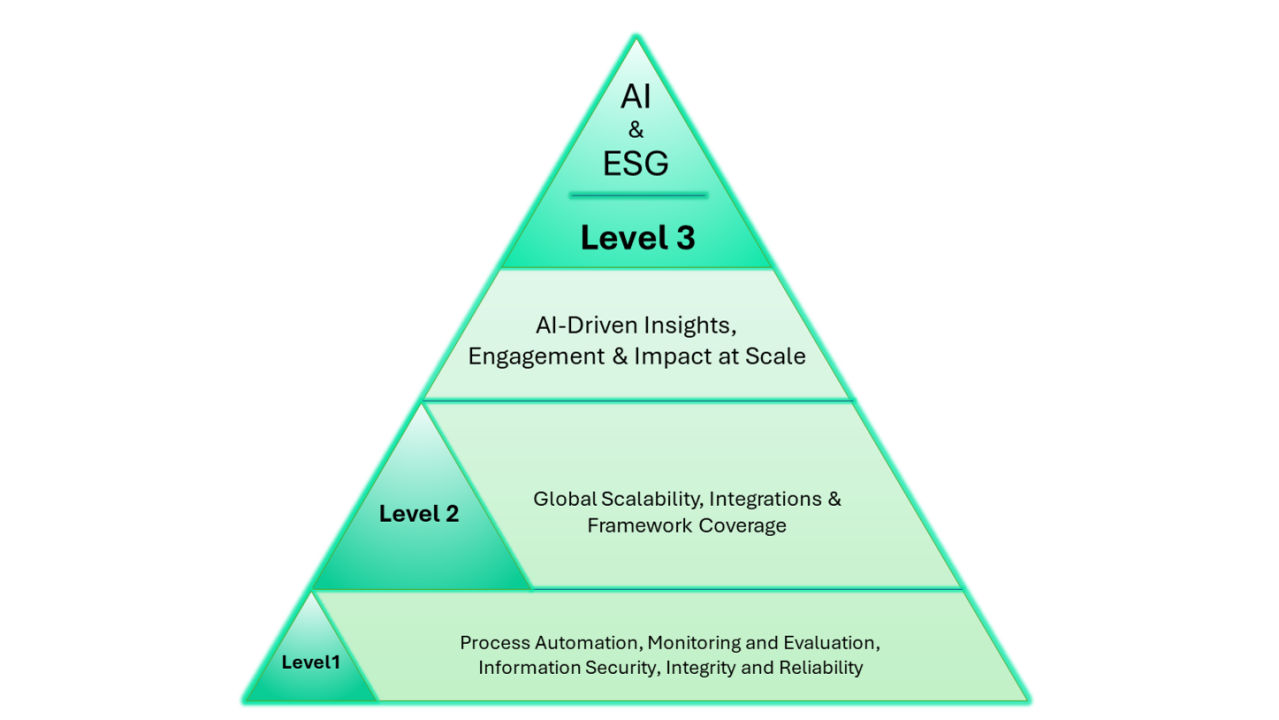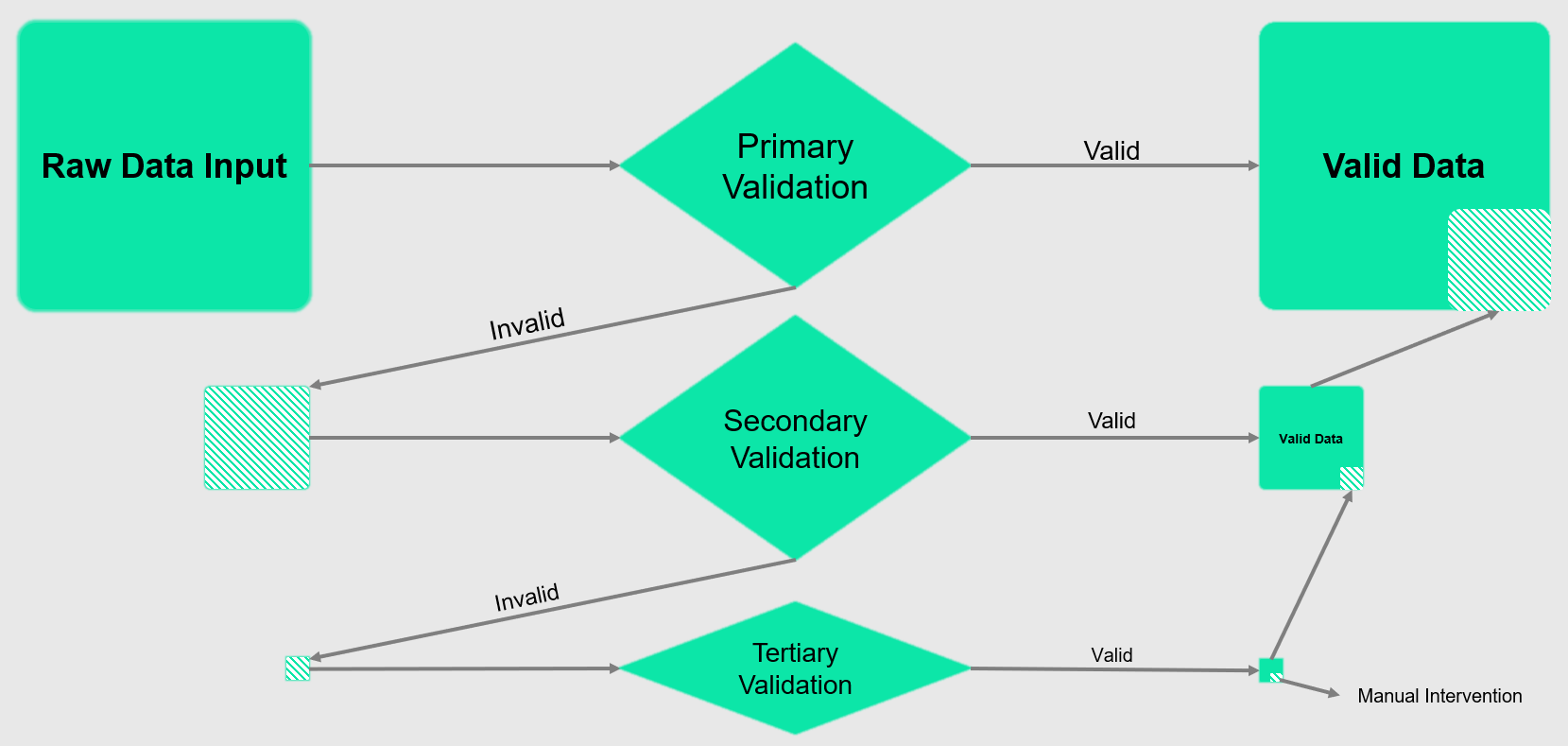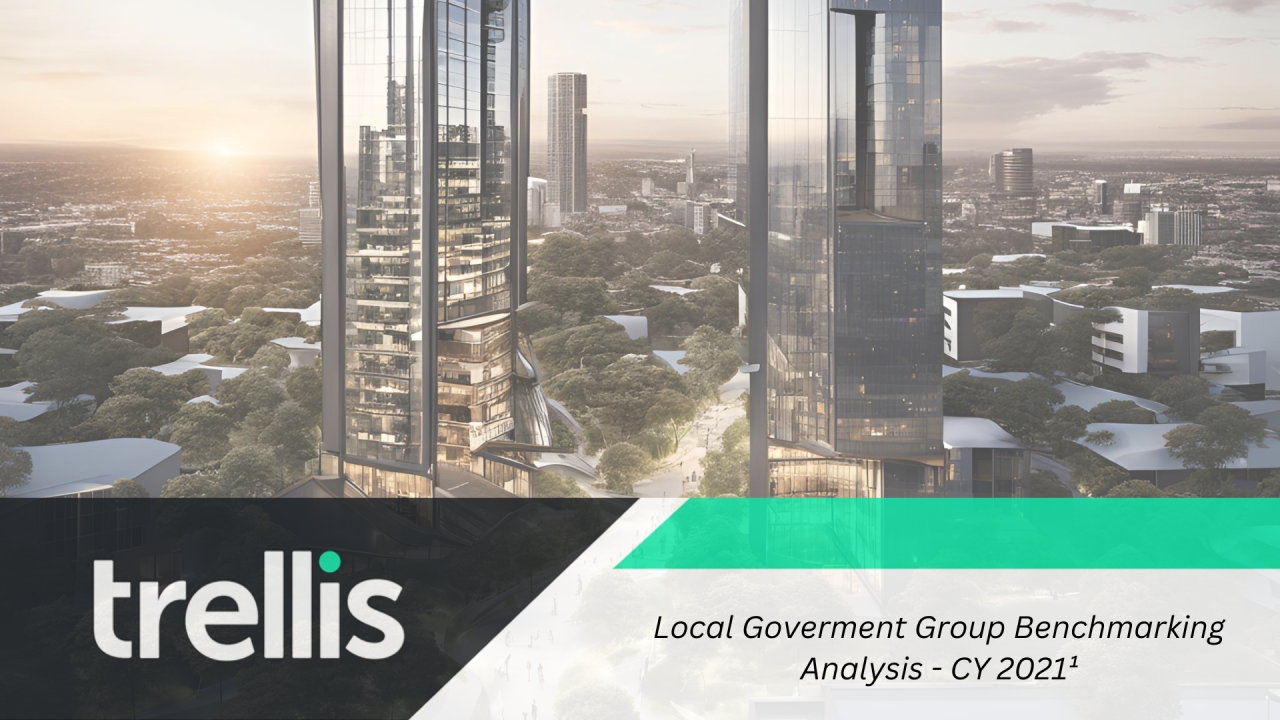A New Frontier in ESG Data: How Advanced AI Drives Impact
In this article, our CTO and Head of AI, Dr. Milad D. explores how Trellis Technologies leverages cutting-edge AI to streamline ESG data management and empower organisations to meet compliance standards while achieving their net-zero goals. Discover how AI can turn complex data into meaningful action.

Integrate your CRM with other tools
Lorem ipsum dolor sit amet, consectetur adipiscing elit lobortis arcu enim urna adipiscing praesent velit viverra sit semper lorem eu cursus vel hendrerit elementum morbi curabitur etiam nibh justo, lorem aliquet donec sed sit mi dignissim at ante massa mattis.
- Neque sodales ut etiam sit amet nisl purus non tellus orci ac auctor
- Adipiscing elit ut aliquam purus sit amet viverra suspendisse potenti
- Mauris commodo quis imperdiet massa tincidunt nunc pulvinar
- Adipiscing elit ut aliquam purus sit amet viverra suspendisse potenti
How to connect your integrations to your CRM platform?
Vitae congue eu consequat ac felis placerat vestibulum lectus mauris ultrices cursus sit amet dictum sit amet justo donec enim diam porttitor lacus luctus accumsan tortor posuere praesent tristique magna sit amet purus gravida quis blandit turpis.

Techbit is the next-gen CRM platform designed for modern sales teams
At risus viverra adipiscing at in tellus integer feugiat nisl pretium fusce id velit ut tortor sagittis orci a scelerisque purus semper eget at lectus urna duis convallis. porta nibh venenatis cras sed felis eget neque laoreet suspendisse interdum consectetur libero id faucibus nisl donec pretium vulputate sapien nec sagittis aliquam nunc lobortis mattis aliquam faucibus purus in.
- Neque sodales ut etiam sit amet nisl purus non tellus orci ac auctor
- Adipiscing elit ut aliquam purus sit amet viverra suspendisse potenti venenatis
- Mauris commodo quis imperdiet massa at in tincidunt nunc pulvinar
- Adipiscing elit ut aliquam purus sit amet viverra suspendisse potenti consectetur
Why using the right CRM can make your team close more sales?
Nisi quis eleifend quam adipiscing vitae aliquet bibendum enim facilisis gravida neque. Velit euismod in pellentesque massa placerat volutpat lacus laoreet non curabitur gravida odio aenean sed adipiscing diam donec adipiscing tristique risus. amet est placerat.
“Nisi quis eleifend quam adipiscing vitae aliquet bibendum enim facilisis gravida neque velit euismod in pellentesque massa placerat.”
What other features would you like to see in our product?
Eget lorem dolor sed viverra ipsum nunc aliquet bibendum felis donec et odio pellentesque diam volutpat commodo sed egestas aliquam sem fringilla ut morbi tincidunt augue interdum velit euismod eu tincidunt tortor aliquam nulla facilisi aenean sed adipiscing diam donec adipiscing ut lectus arcu bibendum at varius vel pharetra nibh venenatis cras sed felis eget.
In today’s climate-conscious landscape, every organisation is called upon to measure and manage its environmental, social, and governance (ESG) performance. As Chief Technology Officer & Head of AI at Trellis Technologies – and someone with a passion for building robust, AI-driven solutions – I’m excited to share how we’re pushing the boundaries of ESG data management in a truly transformative way.
Why listen to me?
I joined Trellis Technologies in 2023 as Chief Technology Officer & Head of AI, bringing nearly a decade of experience in computational and machine learning (ML) applications across industries as diverse as construction, defence, agriculture, and healthcare. Throughout my career, I’ve built and launched zero-to-one AI-powered SaaS products by blending an entrepreneurial mindset with no-nonsense stakeholder management.
I live by a motto I learned long ago from a dear friend, that one must “Give value to get value.” That’s precisely my focus at Trellis: leveraging cutting-edge AI to streamline carbon data capture, reduce friction in activity and spend-based emissions accounting, and help organisations achieve meaningful sustainability outcomes at scale.
Meanwhile, one of our co-founders (and Trellis’ Executive Director) Matt Shorten comes from a deep background in technical auditing; registered with the Clean Energy Regulator (CER) for NGER Act and the National Carbon Offset Standard (NCOS), predecessor to Climate Active. See his great article on why ESG matters now more than ever.
This complementary blend of industry knowledge, AI expertise, and data-centric best practices is what fuels Trellis’s vision: to transform the ESG data challenge through advanced automation, data governance, and actionable insights.
In what follows, I'd like to provide a high-level overview of the impact that AI is driving in managing the complexity and scale of ESG data.
The Real Pain Points of ESG Data
Collecting and managing ESG data is more than just an exercise in compliance; it’s a logistical and analytical challenge. Typically, organisations face:
Evolving Regulations
Globally adapted frameworks like ASRS S1/S2 are constantly evolving. Manual processes strain to keep up, exposing organisations to compliance risk. This dynamism makes it very easy for any system to drift over time, making it very challenging to address ESG data management as regulations are in seemingly constant flux.
Fragmented Sources
Data is scattered across ERPs, procurement systems, third-party vendor portals, or siloed in spreadsheets. This complexity explodes even when you’re dealing with only a handful of facilities or suppliers, let alone for organisations operating at scale. As such, building automation while facing such diversity in data sources, formatting and distribution requires careful design and implementation methodologies to ensure the minimisation of technical debt.
Complex Validation Needs
ESG compliance demands financial-grade accuracy. A minor error – like a misplaced decimal – can warp an entire emissions inventory. I mention below how this particular challenge can be tackled using an iterative validation paradigm.
Ultimately, as someone who has built AI systems at scale, I see these pain points as opportunities for data-centric engineering and clever automation; key ingredients in avoiding spreadsheet chaos and ensuring real-time accuracy.
Bringing AI to ESG Data: What’s New?
You may already know that Trellis serves thirty thousand facilities across Australia and New Zealand, helping them capture, validate, and report their Scope 1, 2, and 3 emissions. But with the latest wave of AI – from domain-specific machine learning to large language models – our capacity to handle massive volumes of diverse data streams has grown exponentially.
In fact, as recently highlighted in The Sydney Morning Herald, high-profile tech executives see AI as “the biggest opportunity of our lifetime” – and a make-or-break moment for companies that fail to capitalise on it. Bill McDermott, CEO of one of the world’s largest enterprise software firms, noted that “AI second movers” stand to “lose big.” At Trellis, we view this not just as a business imperative, but a call to action for organisations to harness AI responsibly and at scale.
Trellis’s approach addresses several critical dimensions scattered throughout various frameworks in ESG as well as information security and responsible AI; from governance and strategy to metrics and targets. Below are some immediate and tangible gains we provide.
Security is Paramount
As an ISO 27001-certified organisation, we’ve institutionalised data protection across all layers of Trellis; role-based, zero-trust-network and SSO access, robust encryption, security patching, and more. We embrace ISO 42001 guidelines for safe AI adoption and are continuously embedding the spirit of such guidelines within our design choices.
My personal philosophy is that AI technologies are powerful tools in a bigger toolkit. It’s not about slapping “AI-first” on everything, but using these technologies judiciously and responsibly to deliver real and maintainable value.
Let There Be Structure: Scalability for Real-Time Data Capture

Managing Scope 1, 2, and 3 is foundational for compliance, but it’s also where organisations can make significant, data-informed improvements. We streamline data extraction and classification by harnessing AI-driven parsing on everything from utility bills, and other unstructured documents – classifying line items by emissions factor, spend category, or usage type as data is received in real-time. This ensures minimal reliance on manual transcription, a known driver of errors and inefficiency.
We apply MLOps and LLMOps (Machine Learning + Large Language Model Operations) to automate reading and parsing complex invoices, scanned documents, or even unstructured text, then automatically classifying line items by spend category or emissions factor.
Fractal Validation Design: Advanced Validations and Edge-Case Handling
My rule of thumb is Murphy’s Law: “If it can go wrong, it eventually will.” We leverage this fact in our design ethos; we build comprehensive validation processes, then apply automation pipelines iteratively on invalidated elements to minimise manual intervention and rework.
Drawing on my background in building “fractal validation” data pipelines, Trellis ensures every data point; whether from billing systems or other data sources; undergoes multiple checkpoints. This reduces risk, highlights anomalies, and yields audit-ready records.
Should we spot an anomaly – such as a sudden doubling of energy usage – our system raises a flag, prompting human review. This ensures any atypical data gets investigated before contaminating aggregate reports.

AI as a Catalyst for ESG Insights
While automation is critical, the real magic of AI is its ability to transform raw, often messy ESG data into actionable intelligence. At Trellis, we deploy a wide array of AI techniques:
Time-Series Pattern Recognition
We monitor consumption patterns – electricity, fuel and water, among many others – across different timescales to recognise usage spikes, pinpoint inefficiencies, and identify seasonal trends. Finding meaning from data is an art as much as it is a science and doing so is often one of the most rewarding elements of building robust data pipelines, as this can trigger effective decision making and lead to measurable outcomes such as significant cost savings and emissions reductions.
Anomaly & Outlier Detection
From surprisingly high utility bills to irregular vendor charges, our AI models highlight outliers that can inflate reported emissions. And since reporting in ESG, as anyone in the industry knows, is taken very seriously by regulators, staying abreast of anamolies and outliers in real-time means catching and rectifying issues well in advance of reporting season, shielding businesses from a lot of mess down the road.
Natural Language Queries & Semantic Search
We’re building natural language interfaces so stakeholders can “talk” to their ESG data, bypassing the need for specialized queries or coding. Applying semantic search on top of large ESG databases allows users to gain a panoptic view of – and a far more natural and deep connection with – their complex ESG data.
What’s Next? Technical Enablers for Future-Ready ESG
E-Invoicing for Real-Time Carbon Ledgers
Structured Data = Fewer Errors: As e-invoicing standards (e.g., Peppol) gain traction, we can auto-parse standardized fields, mapping them directly to carbon factors. This drastically curbs manual data entry and helps accelerate invoice validation.
Quicker Financial & Carbon Reconciliation: When every invoice arrives in a consistent format, it becomes much easier to correlate activity and spend data with emissions metrics – closing the gap between finance and sustainability.
Data Warehouse to Lake Integration for Scalability & History
Centralised Storage: We advocate for a cloud-based data warehouse where all ESG-related data, from the smallest invoice to multi-year historical records, lives in one secure and structured repository. This allows organisations to integrate their ESG data within their larger data lakes to help make more data-driven and holistic decisions.
Flexible Query Layers: With high-throughput APIs and robust data schemas, it’s easy for analysts or data scientists to slice and dice large datasets quickly, revealing insights that might otherwise stay hidden.
Security & ISO Compliance
ISO 27001: We’ve institutionalized data security at every layer, including encryption at rest and in transit, role-based access, and routine patching. Security-first design must be embedded in any responsible SaaS provider in the 21st century, and we take information security very seriously. Investing in our security posture has and will continue to pay dividends in maturing as an organisation.
ISO 42001: We see the management of AI systems as an extension of the requirements of ISO 27001. However, AI systems have well-known and unique security and reliability concerns. This is why we are aligning with, and adopting guidelines from, ISO 42001 ensuring responsible AI use – complete with algorithmic auditing, safe model training environments, and a deliberate approach to privacy.
Why Now? The Road Ahead
With regulations tightening, stakeholder scrutiny rising, and climate commitments accelerating, this is no time for manual or patchwork solutions. Digitising ESG workflows is fast becoming high stakes for:
- Compliance with emerging standards like ASRS S2.
- Organisational Resilience to handle changing markets and supply-chain conditions.
- Competitive Differentiation in a world that increasingly rewards sustainable practices.
My role at Trellis is to ensure we stay a step ahead – so our partners can reap the benefits of technical innovation without worrying about the complexities under the hood.
Until next time…
Thank you for reading. I’m excited about the road ahead at Trellis, and I hope this article gives you a clear sense of how data engineering and AI best practices can revolutionise ESG management. When done right, technology becomes a true force multiplier for climate action – turning raw data into real progress.
I'm always happy to engage with tech enthusiasts and domain experts alike curious to learn more about how AI can impact their lives. If this sounds like you, send me a DM!
“Give value to get value.”
View the original on LinkedIn here.










